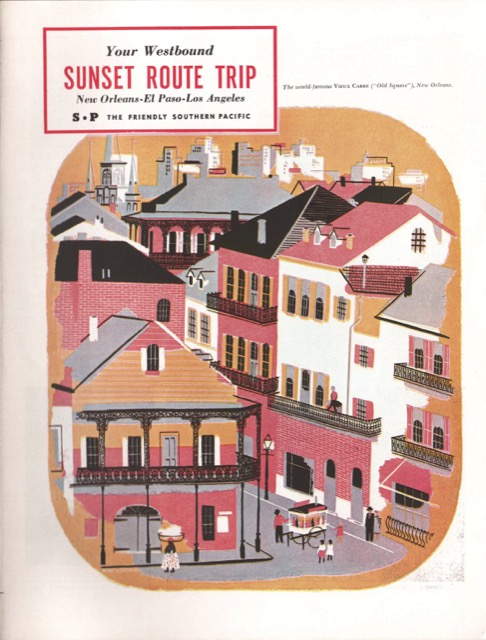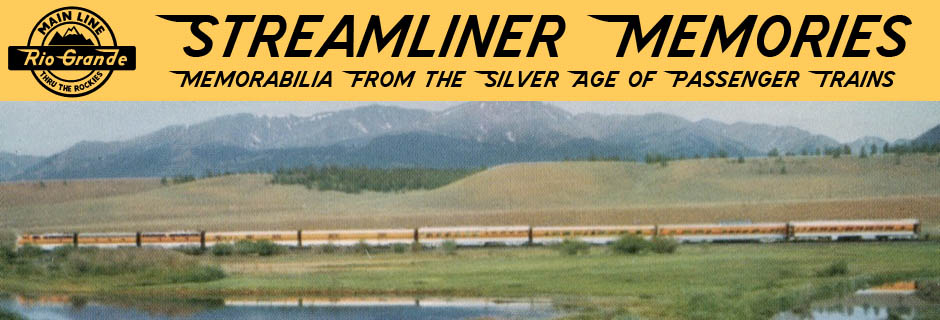The Sunset Route being longer than either the Shasta or Coast routes, this advertisement has twice as many pages. There are no photos or illustrations of passenger trains in the entire booklet, but several photos of New Orleans, cities in Texas, Arizona resorts, and California.
 Click image to download a 7.1-MB PDF of this four-page brochure.
Click image to download a 7.1-MB PDF of this four-page brochure.
As your train passes through Louisiana, “Small Negro children dance with glee and wave to your train from tiny cabins,” the booklet reports obliviously. At the other end of the route the booklet shows a yellow-sky (pollution?) photo of Westlake Park, whose name had been changed to MacArthur Park four years previous. Perhaps the SP didn’t agree with this name change, which was supposedly suggested by William Randolph Hearst who wanted General MacArthur to run for president.

I wonder what happened between June and July of 1946? The text and many of the photos are identical to the “See Twice as Much in 1946” booklet, but the editor has really cleaned up some of the most offensive (even in 1946) prose. There’s no potato peeling Southern Mammy, those gleeful dancing Negro urchins get a capital “N” this time, and the squaws, while still squaws, are no longer described as “blackened”, just camera shy. Either someone in management must have been a little perturbed by some of the language, or the editor was. “Gay” was still an okay phrase though, and the SP streamliners were still speeding everywhere. It’s reading some of this historic literature than makes one realize how relatively recent were some of these attitudes.
Jim